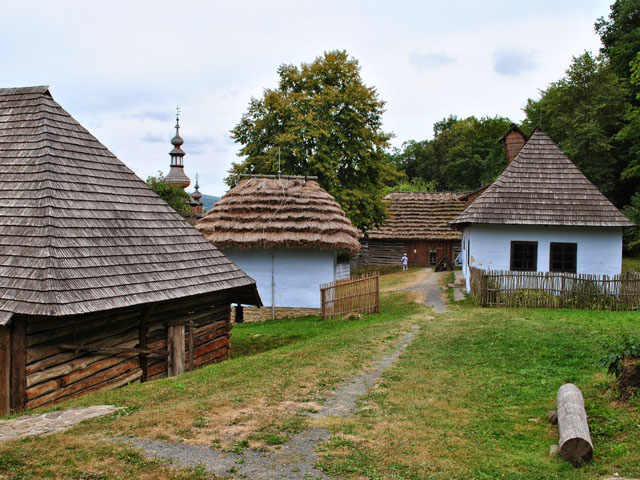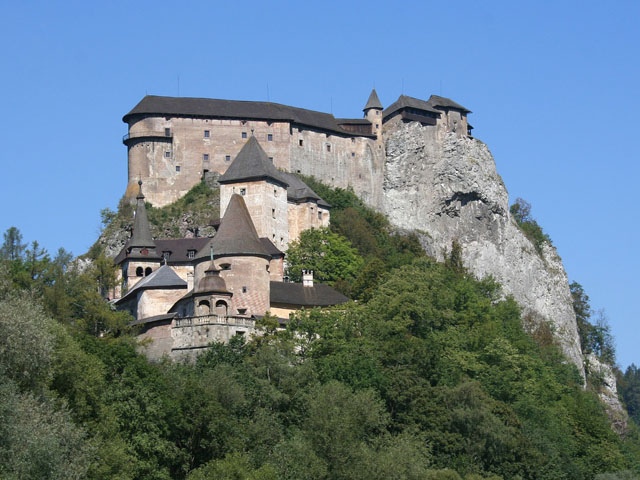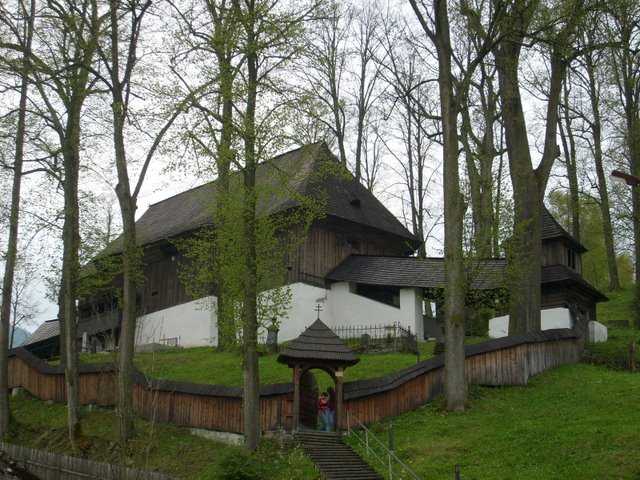
Cicmany vilage - known as the first Folk Architecture Reserve in the world (founded in 1977)
Timbered houses with ridge roofs, galleries and pointed or linear wall decorations have been preserved.

Timbered houses with ridge roofs, galleries and pointed or linear wall decorations have been preserved.

Its exhibition of rural life shows some of the historic regions of Slovakia. Museum tells about the traditions of farming in the Slovak village in the late 19th century. Visitors can see houses, farm equipment, weaving mill, bell shop and wooden church.

The open-air Museum of the Orava Village in Zuberec exhibits folk architecture with original rural houses. The interior of the buildings hosts an ethnographic collection. The Gothic wooden church originates from the 15th century.

The large castle lies on a high rock above the Orava river. Many scenes from the famous vampire horror movie Nosferatu (1922) were shot in Orava Castle.

National Cultural Monument - a wooden articled church originated in 1688. The church interior decorates a Baroque altar with polychrome woodcuts from the 14th century.

The village comprises two or three-room log cabin-type houses. There are preserved the bell tower from 1770, water well, Chapel of the Blessed Virgin Mary, and school.

Wooden church in Hronsek is a precious historical monument, together with a wooden belfry from 1726. The oak pillars have carved header Ionian ornaments. It has a shingle roof with three crosses and a rooster, as a Christian symbol of vigilance.

Spania Dolina village is a historic mining village with a rich history located 11 km north of Banska Bystrica.

The majority of monuments of Banska Stiavnica concentrate in the area spreading between the Trinity and Town Hall squares. The Gothic church of St Catherine from the end of the 15th century and the town hall with its slender clock tower detach these squares.